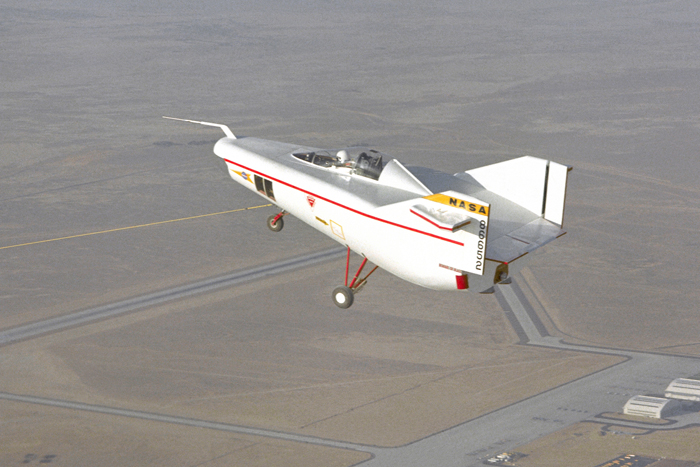Space History Photo: M2-F1 in Tow Flight

In this historic photo from the U.S. space agency, the M2-F1 lifting body is seen under tow at the Flight Research Center (later redesignated the Dryden Flight Research Center), Edwards, California. The wingless, lifting body aircraft design was initially conceived as a means of landing an aircraft horizontally after atmospheric reentry. The absence of wings would make the extreme heat of re-entry less damaging to the vehicle.
In 1962, Dryden management approved a program to build a lightweight, unpowered lifting body as a prototype to flight test the wingless concept. It would look like a "flying bathtub," and was designated the M2-F1, the "M" referring to "manned" and "F" referring to "flight" version. It featured a plywood shell placed over a tubular steel frame crafted at Dryden. Construction was completed in 1963. The first flight tests of the M2-F1 were over Rogers Dry Lake at the end of a tow rope attached to a hopped-up Pontiac convertible driven at speeds up to about 120 mph. These initial tests produced enough flight data about the M2-F1 to proceed with flights behind a NASA C-47 tow plane at greater altitudes. The C-47 took the craft to an altitude of 12,000 feet where free flights back to Rogers Dry Lake began.
Each weekday, SPACE.com looks back at the history of spaceflight through photos (archive).
Breaking space news, the latest updates on rocket launches, skywatching events and more!

The National Aeronautics and Space Administration (NASA) is the U.S. government agency in charge of the civilian space program as well as aeronautics and aerospace research. Founded in 1958, NASA is a civilian space agency aimed at exploring the universe with space telescopes, satellites, robotic spacecraft, astronauts and more. The space agency has 10 major centers based across the U.S. and launches robotic and crewed missions from the Kennedy Space Center in Cape Canaveral Florida. Its astronaut corps is based at the Johnson Space Center in Houston. To follow NASA's latest mission, follow the space agency on Twitter or any other social channel, visit: nasa.gov.
